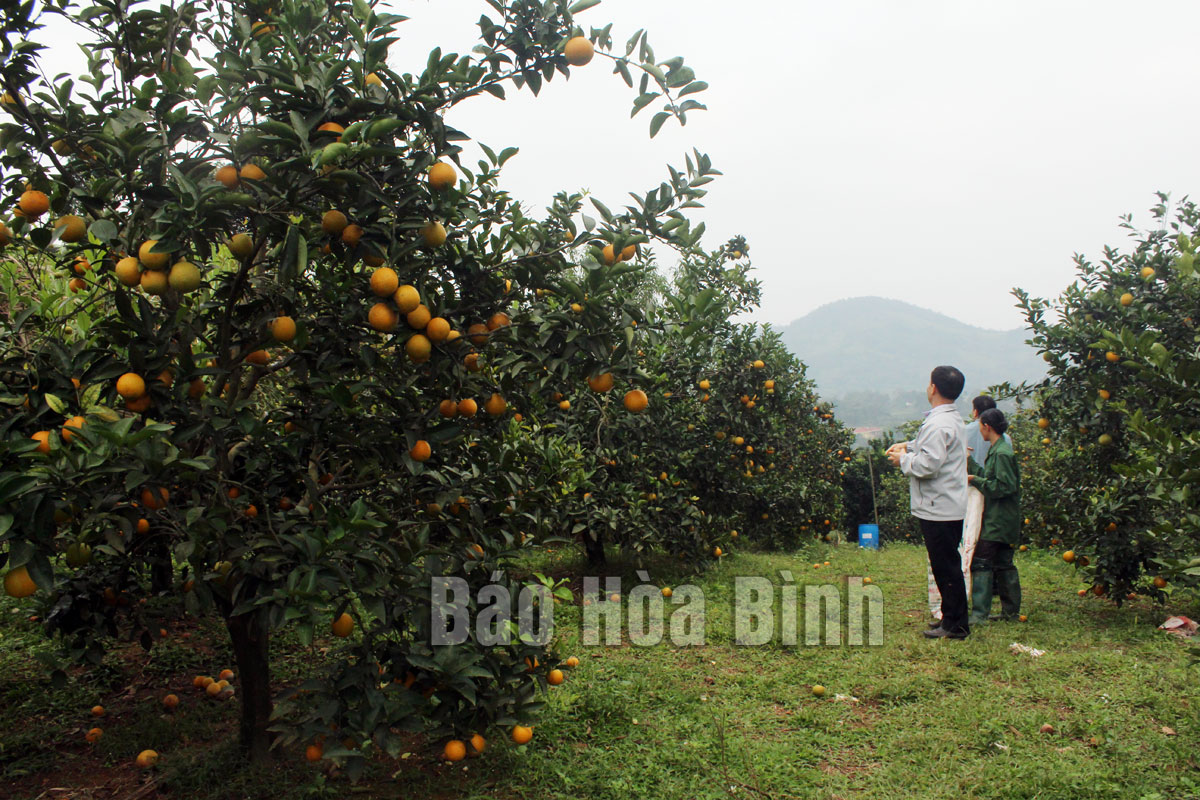
(HBO) – The Hoa Binh provincial People’s Committee issued Document No 2114/UBND-KTN, dated December 1, 2022, on the implementation of the agriculture ministry’s plan on developing key fruit trees by 2025 and 2030.
Residents in Thach Yen commune, Cao Phong district, have harvested profits from
citrus tree farming.
On October 27, 2022, the Minister of Agriculture
and Rural Development issued Decision No 4085/QD-BNN-TT to approve a plan on
developing key fruit trees by 2025 and 2030. In this plan, Hoa Binh province
was tasked with developing orange and pomelo cultivation.
To effectively carry out assigned tasks, the
provincial People’s Committee requested that in terms of orange and pomelo
farming, the People’s Committees of district-level localities press on with
implementing citrus tree re-cultivation measures assigned by the provincial
administration in Decision No 2078/QD-UBND, dated September 16, 2021, which
approved the province’s plan on citrus tree re-cultivation for 2021 - 2025,
with a vision to 2030.
In terms of other fruit trees, including banana,
longan, pineapple, passion fruit, and temperate fruits, authorities were told
to base on localities’ conditions to set up development orientations for the
trees their localities are strong at, ensure stable sale to improve
competitiveness, and connect farming with processing and sale to raise fruits’
added value and secure sustainable development.
Besides, localities need to combine the
development of fruit tree cultivation zones with existing socio-economic
development programmes to maximise their potential and advantages.
They were also asked to form large-scale farming
zones, ensure stable supply and consistent quality, good look of fruits to meet
consumer demand, flexibly apply mechanisms and policies to encourage investment
in line with socio-economic development plans, and increase attracting
investment to sustainable development to achieve the plan’s targets.
In addition, the provincial People’s Committee
also assigned plan implementation tasks to relevant departments and sectors./.
Hoa Binh province is undergoing a dynamic transformation amid Vietnam’s national digital transition. Building on Poliburo’s Resolution No. 57-NQ/TW on breakthroughs in science, technology, innovation, and national digital transformation, the province has rolled out a wide range of practical action plans. A standout initiative is the "Digital Literacy for All” movement, an effort to ensure that no one is left behind in the digital era.
Hoa Binh province is undergoing a dynamic transformation in the wake of the national digital transformation movement. Building on Resolution No. 57-NQ/TW of the Politburo on breakthroughs in science, technology, innovation, and national digital transformation, the province has implemented a wide range of practical action plans. A standout initiative is the "Digital Literacy for All” movement ambitious effort to ensure that no one is left behind in the digital age.
With a spirit of unity and proactive problem-solving, the Party Committee, the government and the people of Dong Lai Commune (Tan Lac District) have made great strides in implementing the resolutions of the 24th Party Congress of the commune for the 2020 - 2025 term. Focusing on leadership and practical actions, the commune has brought the Party’s resolutions into daily life, creating strong impacts and pushing the local development forward.
Amid the nationwide push for digital transformation, young people in Hoa Binh Province are stepping up as dynamic pioneers, applying technology to enhance Youth Union operations and expand the reach of youth-led initiatives. Through creativity and adaptability, Youth Union organizations at all levels have introduced a series of practical solutions, contributing to modern governance and community development.
In recent years, An Nghia commune, located in Lac Son district, has stepped up administrative reform, focusing on improving the quality and efficiency of its single-window service unit for receiving and processing administrative procedures. These improvements have helped create favourable conditions for local residents and organisations to handle administrative procedures, contributing to the commune’s broader socio-economic development.
The Prime Minister-approved master plan to develop the multi-use value of forests ecosystems through 2030, with a vision to 2050, aims to improve the management and sustainable use of forest resources, create jobs, increase incomes, and improve the living standards of ethnic minorities, people in mountainous and remote areas, forest workers and those living near forests.



